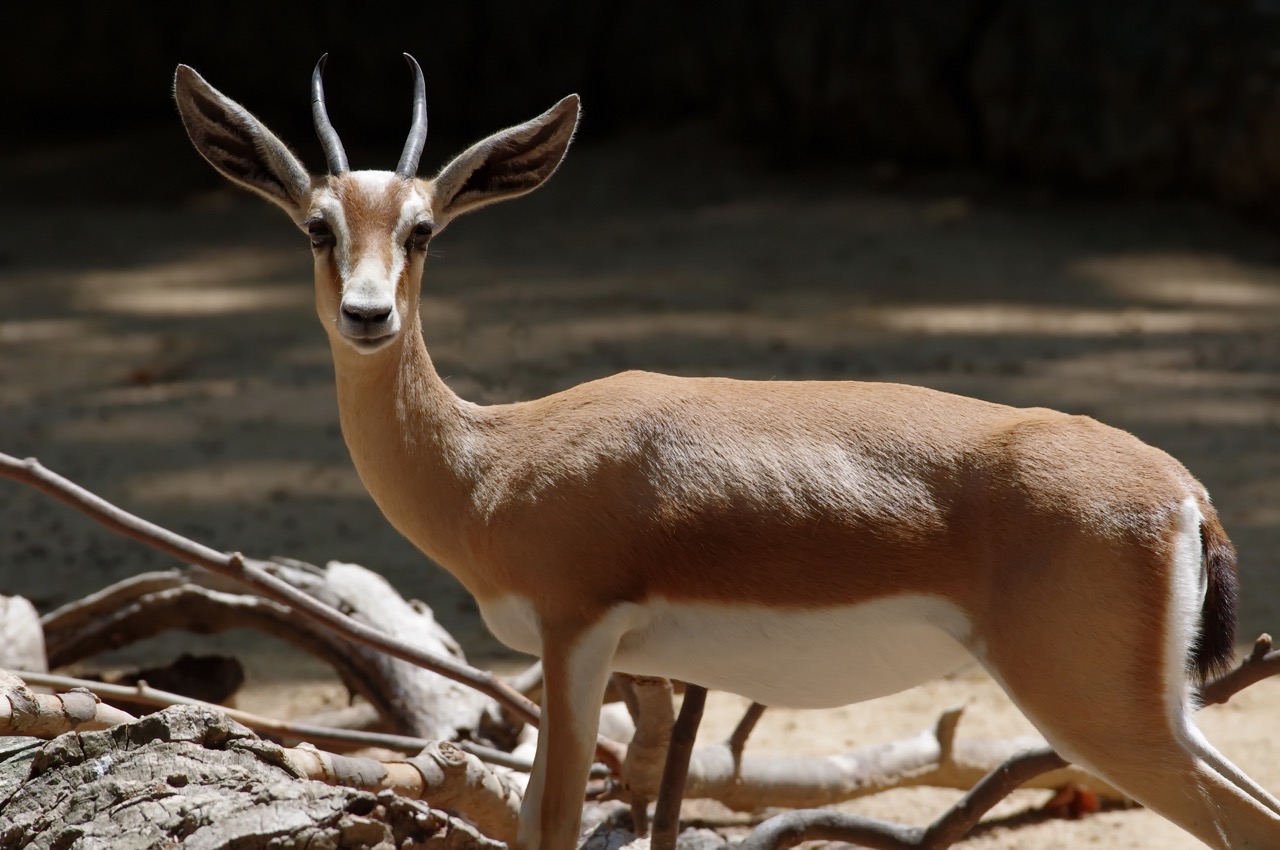Eritrean Coastal Desert
The ecoregion’s land area is provided in units of 1,000 hectares. The conservation target is the Global Safety Net (GSN1) area for the given ecoregion. The protection level indicates the percentage of the GSN goal that is currently protected on a scale of 0-10. N/A means data is not available at this time.
Bioregion: South Red Sea & Gulf of Aden Coastal Drylands (AT22)
Realm: Afrotropics
Ecoregion Size (1000 ha):
460
Ecoregion ID:
93
Conservation Target:
72%
Protection Level:
0
States: Eritrea, Djibouti
Each autumn, hundreds of thousands of Asian and European birds of prey cross from the Arabian Peninsula to Africa via the Bab-el-Mandeb Straits at the mouth of the Red Sea in one of the world’s largest intercontinental raptor migrations. A common passage migrant and winter visitor from the Palearctic realm is the steppe eagle. They most often fly over as individuals but may also occur in groups.
The Eritrean Coastal Desert runs along the southern coast of the Red Sea from Balfair Assoli in Eritrea to Ras Bir near Obock in Djibouti. It occupies the southern shore of the Bab-el-Mandeb straits, which are the entrance to the Red Sea from the Gulf of Aden, and includes several groups of offshore islands, such as the Sept Frères belonging to Djibouti.

The flagship species of the Eritrean Coastal Desert ecoregion is the steppe eagle. Image credit: Creative Commons, Sumeet Moghe
The climate is extremely hot and dry. Annual rainfall averages less than 100 mm but is highly variable from year to year. The mean maximum temperature is 33°C, and the mean minimum temperature (27°C) is the highest experienced anywhere in Africa. Basement rocks consist of volcanic lavas from the Ethiopian Highlands that reach the Red Sea, overlain with regosols.
The landscape consists of a flat, largely featureless sand or gravel plain lying below 200 m altitude, interspersed with rocky outcrops. The shoreline is a mixture of rocky areas (e.g., around Ras Siyan in Djibouti), old coral reefs that are exposed at low tide, and sandy beaches.
Vegetation consists of sparse herbaceous/grassy steppe and scattered Acacia tortilis/Acacia asak steppe with some Rhigozum somalense/Caesalpinia erianthera shrubland. Along the coast, there are stretches of halophytic vegetation, and the few sheltered creeks are fringed with stands of mangroves. Inland, the ecoregion grades into xeric grasslands and shrublands.
The ecoregion is part of the Somali-Masai regional center of phytogeographic endemism. This desiccated ecoregion contains no outstanding biological features, few resident fauna, and few endemics. Only three near-endemic species are found here, all of them reptiles: the Ogaden burrowing asp, Ragazzi's cylindrical skink, and the Indian leaf-toed gecko.

Dorcas Gazelle (Gazella dorcas)
Among mammals, the dorcas gazelle is still relatively common, as well as antelopes such as Sömmerring's gazelle and Salt’s dik-dik. Each autumn, hundreds of thousands of Asian and European birds of prey cross from the Arabian Peninsula to Africa via the Bab-el-Mandeb Straits at the mouth of the Red Sea. Scientists have recorded 26 species of raptors, the two most numerous species being the steppe buzzard and the steppe eagle.
In addition, the Sept Frères islands have important breeding colonies of crested tern and lesser-crested tern, while green turtle and hawksbill nest in sheltered sandy coastal coves.
The habitats of the ecoregion are largely intact but degraded by overgrazing and fuelwood collection, particularly near settlements. The inhospitable condition of this ecoregion for human settlement offers some protection to the wildlife. The only protected area is Iles des Sept Freres ainsi que Ras Syan, Khor Angar et la foret de Godoria in Djibouti. In Eritrea and Djibouti, hunting is forbidden by law, but enforcement is very weak, and hunting remains a concern in both countries.
Poaching of gazelles, marine turtles, and nesting seabirds (for both meat and eggs) occurs, particularly on the offshore islands, which are important turtle nesting and foraging sites. There is also the threat from coastal habitat conversion for urban and industrial development. A further potential threat is continued climate change resulting in desertification due to a shortage of rainfall.
The priority conservation actions for the next decade will be to 1) establish well-connected and ecologically representative protected areas, 2) establish capacity-building programs for herders in local communities on forage production to reduce biodiversity loss from over-grazing, and 3) develop a conservation and monitoring program for rare, endangered, and threatened species including sea turtles.
-
-
1. Burgess, N., Hales, J.A., Underwood, E., Dinerstein, E., Olson, D., Itoua, I., Schipper, J., Ricketts, T. and Newman, K. 2004. Terrestrial ecoregions of Africa and Madagascar: a conservation assessment. Island Press.
2. The State of Eritrea. 2015. Revised National Biodiversity Strategy and Action Plan for Eritrea (2014-2020). Asmara, Eritrea: Ministry of Land, Water and Environment.
3. Redman, N., Stevenson, T. and Fanshawe, J. 2016. Birds of the Horn of Africa: Ethiopia, Eritrea, Djibouti. Somalia, and Socotra. Princeton University Press.
4. Ghebrezgabher, M.G., Yang, T. and Yang, X. 2014. Remote sensing and GIS analysis of deforestation and desertification in central highland and eastern region of Eritrea (1972–2014). International Journal of Sciences: Basic and Applied Research. 18(2), pp.161-176. -
Cite this page: Eritrean Coastal Desert. Ecoregion Snapshots: Descriptive Abstracts of the Terrestrial Ecoregions of the World, 2021. Developed by One Earth and RESOLVE. https://www.oneearth.org/ecoregions/eritrean-coastal-desert/
-
-CC-2014.jpg?auto=compress%2Cformat&w=1600)



